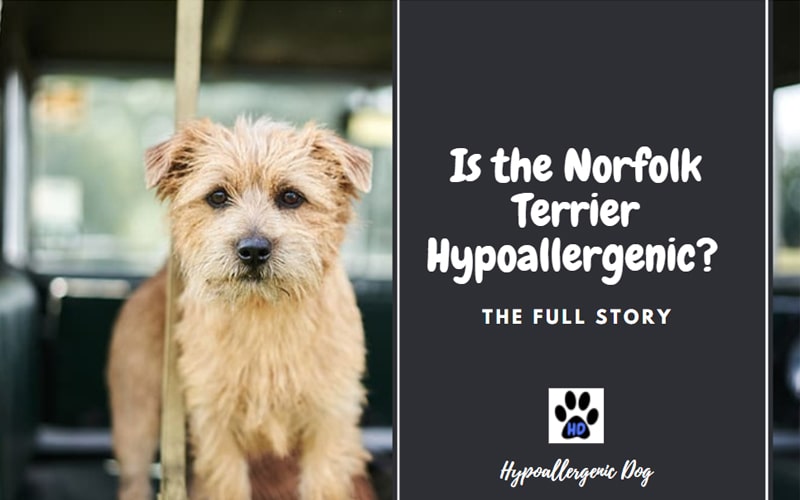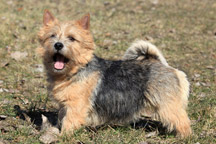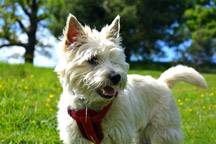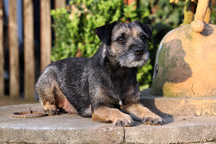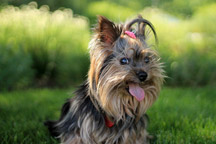Are Norfolk Terriers Hypoallergenic Dogs?
Absolutely! This tenacious tiny terrier is ideal for allergy sufferers who need a low-shedding pooch.
The Hypoallergenic Norfolk Terrier
Friendly, feisty, and fearless, the completely adorable Norfolk Terrier makes for an ideal hypoallergenic doggie.
The issue is, many prospective pet parents who are sensitive to canines are discouraged by their wiry, dense, and shaggy coat—assuming it’s going to mean a houseful of hair.
Nothing could be further from the truth!
The Norfolk Terrier is remarkably low-shedding. Sure, it will drop some hair in spring and fall—every dog does. But outside of those times, these pooches hold onto their fur like a magnet.
Furthermore, the thick texture of the coat retains the dander—meaning you’re not going to be coughing and sneezing from these skin cells becoming airborne. And, with some minimal brushing, you can easily remove it from their fur.
And, it doesn’t end there.
Some people can develop unwanted reactions to the proteins in dog saliva—causing asthma, eczema, and sniffles. Luckily, the Norfolk Terrier doesn’t slobber or drool—so no icky moisture on your skin, furniture or bed to induce intolerances!
In short, the Norfolk Terrier is a compact canine that counters concomitant coughing.
Are Norfolk Terriers Hypoallergenic Dogs? Contents
Norfolk Terrier Quick Facts
About the Norfolk Terrier
Physical Characteristics and Coat of the Norfolk Terrier
Norfolk Terrier Temperament
Norfolk Terrier Grooming and Care
Norfolk Terrier Training and Exercise
Training Your Norfolk Terrier
Norfolk Terrier Health Issues
Conclusion
Norfolk Terriers FAQs
Norfolk Terrier Fact Summary

Norfolk Terrier Quick Facts
| Hypoallergenic Dog: | Absolutely! |
| Shedding: | Extremely low |
| Drooling: | No |
| Size: | Small |
| Breed Group: | Terrier |
| Lifespan: | 12 to 16 years |
| Energy Level: | High |
| Trainability: | Easy |
| Family Dog: | Yes! |
About the Norfolk Terrier
With an adorable face, smiling mouth, and petite size—you’d believe this pretty pooch was a complete softie and the perfect lap dog.
In reality, it’s a terrifying terrier terminator—well, at least if you’re a small rodent.
The Story Behind the Norfolk Terrier
Back in the 1880s—in the relatively quiet and flat county of Norfolk, UK—sportsmen attempted to breed the ultimate hunting dog. Crossing short-legged pooches—such as the Irish Terrier—with red-coated doggies from the traveling community, they developed a canine similar to the Norfolk Terrier of today.
This pooch enjoyed a fair amount of popularity—mainly among upper-class landowners who appreciated the doggie’s incredibly high prey drive—utilizing it to eliminate rats and mice from their sheds and barns.
Then, the Norfolk Terrier went off to study.
The breed found immense favor with students at Cambridge University—possibly because they were the sons and daughters of the rich farmers who already owned a Norfolk Terrier.
In the early 1900s, although being a remarkably high-society learning institution, the student rooms at Cambridge were, unfortunately, rat infested. Hence, the Norfolk dog functioned both as a companion and ratter. This gave rise to one of its alternative names, the Cantab Terrier (Cantab being an abbreviation of Cantabrigian—the Latin for someone from Cambridge).
Around the year 1910, Frank ‘Roughrider’ Jones, a British horseman and dog enthusiast, refined the breed—eventually exporting them to the USA. He called them Norwich Terriers, after his home town—although they also picked up the nickname of Jones Terriers—after ‘Roughrider’ himself.
These Norwich terriers had quirky ears—in some litters, they were upright and pointy, in others, folded and droopy. The floppy-eared types became known as the drop-eared Norwich—but eventually were recognized in their own right and became the Norfolk Terrier.
The AKC (American Kennel Club) recognized both the Norwich and Norfolk Terriers as separate breeds in 1979.
Physical Characteristics and Coat of the Norfolk Terrier
Look into the face of a Norfolk Terrier and if you don’t immediately fall in love—then I’m sorry, but you have no heart!
Floppy ears, a big grin, and black round eyes, together deliver an overwhelming sense of total cuteness. What’s more, the Norfolk Terrier size makes it completely adorable—measuring just 9-10 inches and carrying charmingly short legs.
However, don’t think size means the Norfolk Terrier is delicate and precious.
This pooch is an incredibly hardy and sturdy beast that loves a little rough and tumble—preferably with a small and unlucky animal. Even the AKC recognizes this doggie is going to get into scraps and scrapes—allowing wear and tear scars in competition.
The dog’s weather-resistant coat has a rough and wiry outer texture, with a soft, thick and warm undercoat. It grows to a length of around 2-3 inches and does require a little grooming attention to keep it in top form.
The usual colors of the Norfolk Terrier are:
- Black and tan.
- Grizzle.
- Red.
- Red and wheaten,
- Brown.
- Wheaten.

Norfolk Terrier Temperament
The Norfolk Terrier is the Napoleon of the dog world—although short in stature, it’s completely fearless, a master manipulator, and would probably invade other countries if it had the chance.
It’s this adventurous and outgoing nature that many pet parents find most appealing in their Norfolk Terriers. This isn’t a pooch for those people who want a lazy lap-dog—but ideal for owners who want a challenge and are willing to keep stimulating their pooch.
Furthermore, just like its French counterpart, the Norfolk Terrier loves to travel. It’s the ideal doggie for taking on vacations and hikes—it just wants to explore.
These doggies were originally bred to hunt in packs—and this sense of group unity is carried through in the modern-day breed. They adore being in family environments, bonding with each member equally, and are excellent with children.
But be careful—the Norfolk Terrier isn’t a great fan of sharing.
While they’ll love all members of your two-legged pack the same—introduce anyone new into your home and they can become seriously jealous.
Don’t get me wrong, their inquisitive and outgoing nature means the Norfolk Terrier will be completely friendly to strangers. However, if these newcomers become a little too cozy or sit too close to you on the sofa—expect your doggie to wedge himself between you both and start demanding attention.
Many Norfolk Terrier owners report that their pooches are excellent around other dogs and cats. But, I wouldn’t recommend them to owners of rabbits, hamsters, gerbils or equally small rodents. If this includes other pet members of your household—perhaps you should consider an alternative hypoallergenic dog!
Remember, this dog is a hunting machine.
Even if in cages, these are tiny-tailed temptations for your Norfolk Terrier. He or she will try their hardest to get hold of the little animals. Even if unsuccessful, they’ll terrorize them through the bars.
However, around you and your family, they’ll be complete softies.
They love cuddles and attention—and will repay you tenfold in affection. As pack animals, all they want is to be around people, and will be one of the most loyal dogs you could dream of.
But don’t leave them alone for too long!
They thrive on company—meaning that they can easily suffer loneliness and separation anxiety.
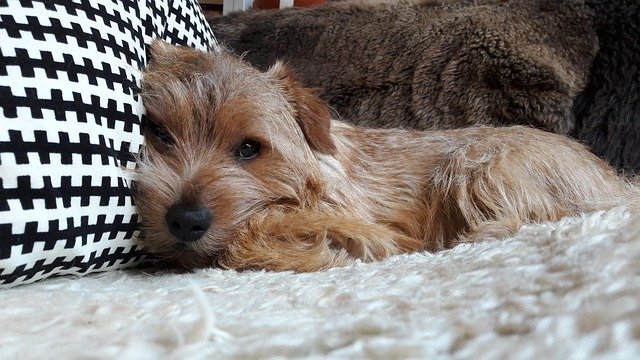
Norfolk Terrier Grooming and Care
Looking After Their Coat
Overall, the Norfolk Terrier’s coat is easy to maintain—but there are some essential dos and don’ts to keep it in excellent and attractive condition.
Perhaps the most challenging aspect is that their coats require hand-stripping in the fall and spring. This is necessary to remove dead hairs and excessive undercoat to allow for new growth. If you haven’t tried this before, then use a reputable dog groomer to do it for you—or take an evening class to learn the procedure.
As Norfolk Terrier shedding levels are low, as purely companion doggies, there’s no requirement for daily grooming—once a week is sufficient. However, if this is to be a show pooch—then you will naturally need to be addressing the coat every day.
Many Norfolk Terrier owners find that a steel ‘greyhound’ comb works best with the dense and wiry hair of the breed.
Nonetheless, don’t be tempted to go for any extreme clipping!
Sure, it lowers the amount of time you need to groom your dog—but it completely wrecks the texture and color of the coat—which are vital to the Norfolk Terrier’s characteristic appearance.
And… be prepared for frequent bathing!
The Norfolk Terrier loves to dig, burrow, dive into bushes, and explore. If let off the leash, it’s not unusual for your walk to be followed by a quick session in the shower, to remove all the dirt which has managed to stick to your pooch’s coat.
The nails and teeth of the Norfolk Terrier don’t require any more attention than most other breeds. Just keep the nails under control and trim when necessary—typically every one to two weeks. And clean their teeth a couple of times a week with a dog-friendly toothpaste.

Norfolk Terrier Training and Exercise
Although, as small and compact dogs, they’re ideally suited to apartment life—this doesn’t mean your doggie can sit inside all day.
These pooches are filled with boundless energy.
Having a yard or garden that they can run around and amuse themselves in is a bonus—but this doesn’t remove the necessity for daily walks.
At the very least, these pooches should have two 20-minute strolls per day. Otherwise, they’ll become frustrated and take that agitation out on your furniture—or continually bark until you give them the activity they need.
The Norfolk Terrier absolutely adores games of fetch. as it resembles the thrill of the chase for which the pooch was originally bred.
But that comes with some issues.
The Norfolk Terrier’s appearance may have been slightly refined over the years—but its prey drive remains as strong as when it was clearing the vermin from the farmer’s barns.
If it moves—your dog will chase it.
Hence, if you’re playing fetch, it’s vital to do this in an enclosed area where your pooch can’t escape from—and other small animals cannot find their way into.
Let them off the leash in a park or field and they’ll decide it’s time to trap rabbits, squirrels, voles, or any other little creatures they spot. And, once they’ve caught the poor unfortunate creature, they’ll proudly bring the bloody mess back to you as a kind of macabre present.
So, be careful!
Training Your Norfolk Terrier
With strong human bonds and a desire to please, the Norfolk Terrier responds well to training—with a little dedication.
And, as they will chase other animals and may try to push the boundaries to see what they can get away with—obedience work is necessary.
However, watch the rewards!
Ideally, try to use praise or their favorite squeaky toy or ball as their ‘prize.’ Or—if you need to use treats—give them out sparingly.
Norfolk Terriers put on weight incredibly easily.
You know the person who says they only have to look at a cake and they’ve gained four pounds? In dog terms, that describes the Norfolk Terrier.
In fact, this carries over into their daily meals too. It’s essential that you use high-quality food that isn’t high in fat. While a rotund and short-legged Norfolk Terrier may look as cute as a button, it’s not helping its health.
In agility and flyball trials, they’re phenomenal. Swift, able to turn on a sixpence, and superfast reactions—all stemming from their hunting past—makes them excel in competition.
The only area where you may face a challenge is house training. These small pups have equally tiny bladders—meaning they can’t hold it in for long!
Here are my quick tips on effective Norfolk Terrier toilet training:
- As a puppy, your little one will need the bathroom frequently—as soon as they wake up, after any daytime naps, after play, after dinner, and before bedtime.
- Take your Norfolk Terrier for strolls at the time they usually do their business.
- Shower your pooch with oodles of praise when s/he pees in the correct place.
- Only allow your Norfolk Terrier free roam of the house once toilet training is complete.
- Use a crate—Norfolk Terriers love their own den.
- If you don’t have access to a yard—if you live in a high-rise, for example—try litter-pan training.
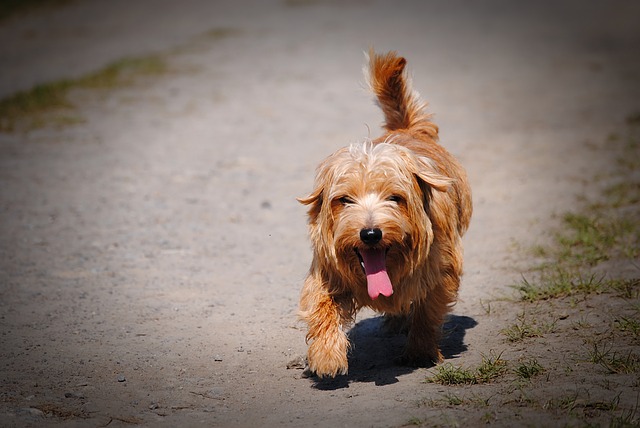
Norfolk Terrier Health Issues
Happily, Norfolk Terriers are healthy dogs and aren’t prone to many of the issues that affect other small pooch breeds.
However, there are three conditions to be aware of:
Similar Dog Breeds To Norfolk Terrier
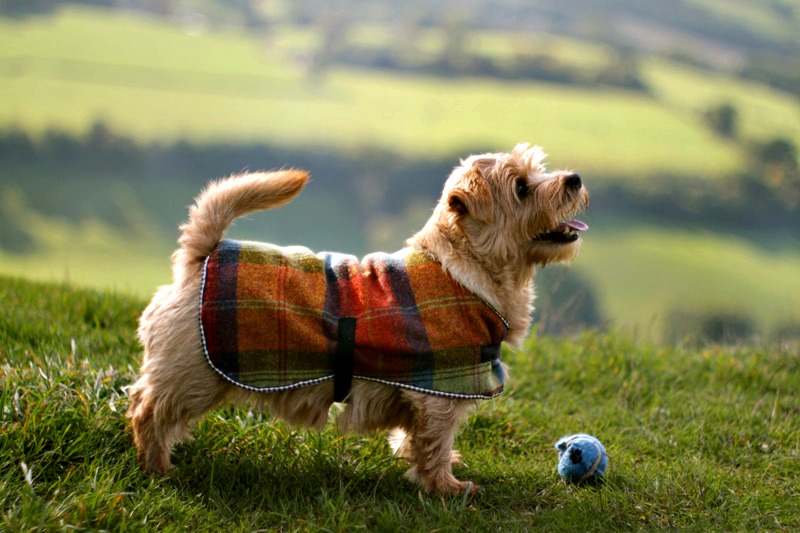
Conclusion
With a fearless temperament, an immense desire for adventure, and a wish to shower you with adoration—the Norfolk Terrier can make a wonderful four-legged addition to your family.
Energetic and lively, this pooch will keep you on your toes, be an effective (if small) guard dog, and create daily hilarity.
Ok, it’s not all trouble free! You need to ensure your Norfolk doesn’t overeat—and you literally have to keep him or her on tight reins outside. But, apart from that, they’re pretty easy going.
What’s more, they’re unlikely to bring on cases of coughs, itches, or sniffles.
The Norfolk Terrier hypoallergenic nature means they’re ideal for pet parents with sensitivities.
Norfolk Terriers FAQs
Do Norfolk Terriers Make Good Pets?
Undoubtedly yes!
Norfolk terriers are loyal, fun-loving, alert, cute as a button, and bond well with all members of the family. What’s more, they’re ideal for allergy sufferers as they’re one of the most hypoallergenic dogs.
Do Norfolk Terriers Bark a Lot?
No. The Norfolk Terrier neither barks or yaps to any significant degree.
However, leave them alone for too long and they may suffer from loneliness and separation anxiety—which can make them bark. Equally, these are active dogs, so—if they don’t receive the activity they crave—they will vent their frustrations through vocalizations.
How Long Do Norfolk Terriers Live For?
Generally speaking, Norfolk Terriers live between 12 and 16 years.
Are Norfolk Terriers Easy to Train?
With lots of positive reinforcement, training a Norfolk Terrier isn’t difficult. Being intelligent and eager to please their pet parents, they respond well to training.
However, use toys or vocalizations as their rewards—not doggie treats—as this breed easily puts on weight.
Are Norfolk Terriers Aggressive?
Around both adults, children, and other dogs or cats in the home, Norfolk Terriers are complete softies. They may be wary of strangers, but will not respond in an aggressive manner.
However, if they’re off the leash and spot some small prey—such as a rabbit—then their natural hunting instinct will take over.
Do Norfolk Terriers Shed?
Hardly at all. Like all dogs, they will lose some hair in spring and fall. However, throughout the rest of the year, they retain much of their coat—making them ideal companions for pet parents with allergies.
How Much Do Norfolk Terriers Cost?
A Norfolk Terrier will cost you in the region of $2000-$4000. However, those with a notable bloodline or of a superior pedigree could set you back over $6000.
How Far Can a Norfolk Terrier Walk?
While their short legs don’t make them suitable as running companions, their hardy and robust nature means they’re high on endurance.
Take them for a two-hour or eight-mile walk and the Norfolk Terrier will not struggle.
Was Toto a Norfolk Terrier?
No. The dog made famous by the movie, The Wizard of Oz (1939), was a brindle Cairn Terrier—whose real name was Terry.
How Big Is a Norfolk Terrier?
A typical Norfolk Terrier is 9-10 inches at the shoulder and weighs between 11 and 12 pounds.
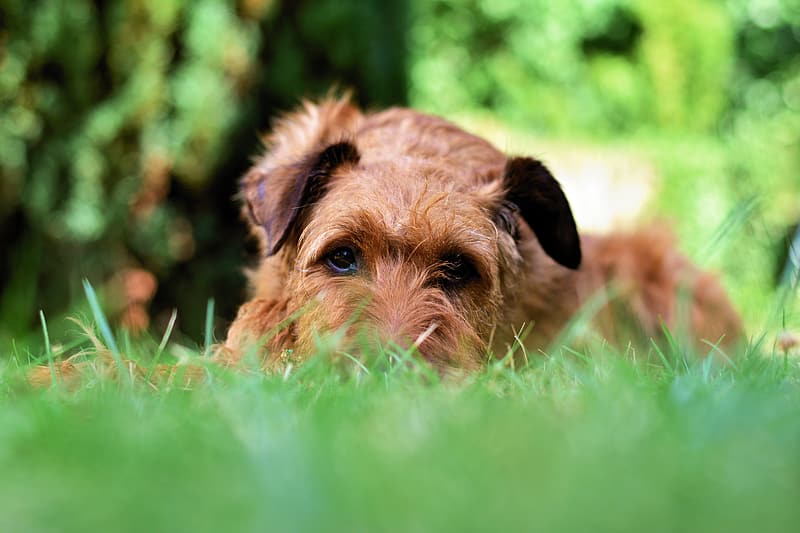
Norfolk Terrier Fact Summary
| Breed | Norfolk Terrier |
| Other Names | Norfolk Dog, Cantab Terrier, Trumpington Terrier, Drop-Eared Norwich Terrier, Jones Terrier |
| Height | 9-10 inches (22.86-25.4 cm) |
| Weight | 11-12 pounds (4.98-5.44 kg) |
| Lifespan | 12-16 years |
| Temperament | Possesses one of the softest temperaments in the entire Terrier group. They’re loving, playful, alert, outgoing, and excellent with children |
| Colors | Can be black and tan, red and wheaten, grizzle, red, brown, and wheaten |
| Coat | A wiry and shaggy top coat, with a dense undercoat |
| How much grooming? | Competition dogs should be groomed daily, while companion dogs require only weekly attention. Don’t clip the coat as this ruins its distinctive color and texture. Requires hand-stripping in spring and fall |
| How much shedding? | Low—only seasonal |
| Dander levels | Low |
| Saliva | No drooling or slobbering |
| Energy levels | Highly active |
| How much exercise do they need? | At least two 20-minute walks per day |
| Health problems | Common issues include mitral valve disease, patellar luxation, and hip dysplasia |
| Good for an apartment? | Yes—but still require daily walks |
| Suitable for kids? | Excellent—they adore children |
| How much do they bark? | Seldomly. They may become vocal if left alone for extended periods or they aren’t participating in sufficient exercise |
| Can they be left alone? | Only for a short time as they suffer from separation anxiety |
| Intelligent? | Yes |
| Trainable? | Yes—but don’t reward with treats as they have a propensity to put on weight |
| How popular as a pet? | The AKC ranks them as the 126th most popular breed (out of 195). Also, the Norfolk Terrier hypoallergenic nature means they’re favored by allergy sufferers. |

